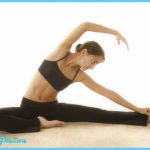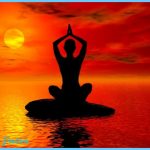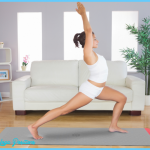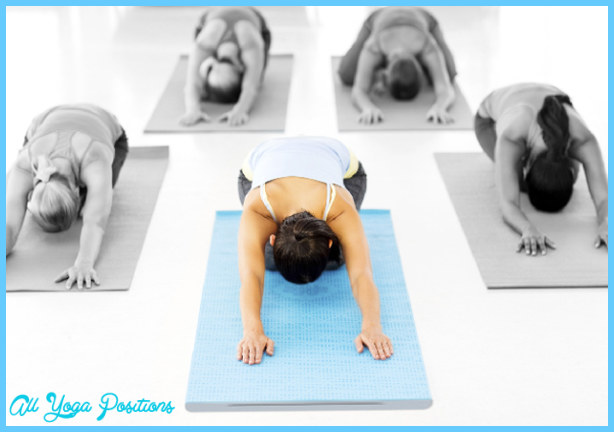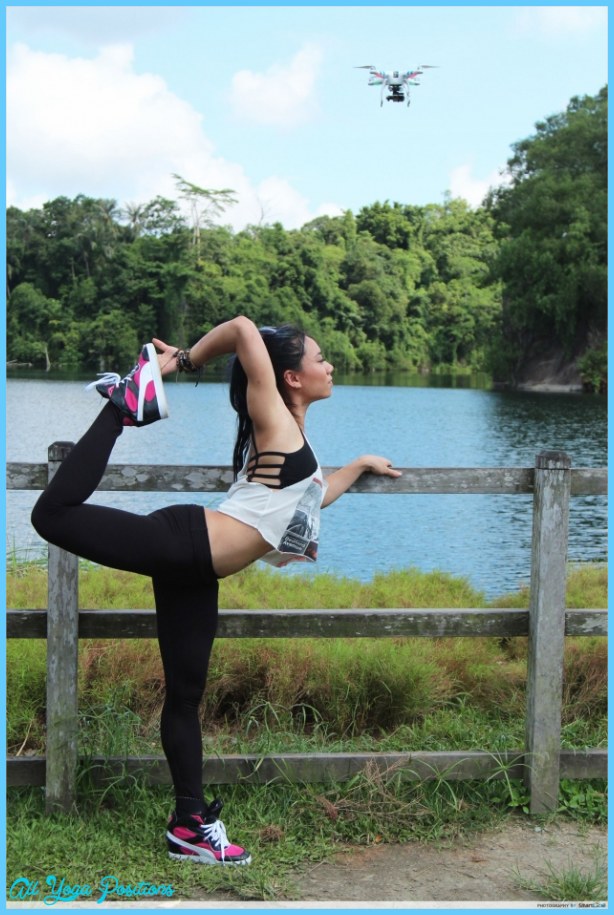Good sources for everything you could (materially) need to do yoga:
Yoga mats. These are extremely light mats made from rubber and ranging in thickness. They are sometimes called sticky mats or traction mats. One side of the mat is sticky and adheres to the floor so that you don’t slide. The mats come in colors, such as purple, blue, or gray, and range from $22 to $26 for thin mats. There are deluxe mats that are thicker and more expensive. Prices vary accordingly. Look for a mat that you can toss in the washer and roll up and put in a corner.
Blankets. The blankets usually measure 50 x 80 inches or 60 x 80 inches, and are made of a firm or woven cotton or wool. The blankets are used in many poses for support of the head, back, neck, legs, and other areas.
Bolsters. Bolsters are round or rectangular cushions that are cotton filled. Round bolsters are approximately 26 inches long by 9 inches in diameter; rectangular bolsters measure 7 x 12 x 25 inches. They are used in numerous ways to support your body and help attain various postures. Rolled towels or small chair cushions will work, as well.
Blocks. Lightweight wood or foam blocks are approximately 4 x 6 x 9 inches, and are used under your feet or hands to help you get into a pose.
Cotton straps with D-ring buckles. These straps are available in standard lengths of 6 and 9 feet, and are used for stretching in poses.
Sandbags. These 5- and 10-pound sand-filled bags (which can also easily be made) are used in postures for support or to attain a pose.
Zafus. These are hard round or crescent-shaped pillows used for meditation. They are more comfortable than sitting on a flat floor.
Benches. Small lightweight wooden benches are sometimes used instead of the floor or a pillow for sitting during meditation by individuals who find sitting on a floor or pillow difficult.
Learning to do yoga correctly is vital. The first order of the day is to find a good teacher and yoga class. To do this, shop around ask questions and talk to people. Some teachers are certified and some are not. The most important aspect of a teacher is how you feel about that teacher’s ability to teach you yoga. Once you find a yoga class, be attentive and arrive on time. You might want to practice yoga at home; if so, find a quiet place and a regular time of day to practice. If the style of yoga you are doing requires props, learn how to use them and have them handy. Ultimately, yoga is just like any other practice that requires some dedication; it can have obstacles. Evaluate them to overcome them.
Now that you have found a great yoga teacher and the right class, a perfect place at home to practice, and are at ease practicing the asana, the next step is learning to meditate. But before we journey into meditation, let’s glance at the body’s chakras, in chapter 6.
5. The stream descends to the solar plexus, turning a brilliant yellow. Visualize the yellow stream cleansing away doubts about your personal self, allowing you to freely express your true self.
6. As the stream is drawn downward into the belly or navel area, it turns orange. The orange stream cleanses all the anger or personal frustration about yourself, freeing penned-up energy.
7. As the stream enters the first chakra, it turns ruby red. Visualize the red stream cleansing what you have held on to, and let it wash away excess worldly weight. Taking a deep breath, let the red stream flow out through your toes.
8. Continue to inhale and exhale, and imagine all the colors converging and turning into a beautiful clear stream of water. The stream bubbles up through each chakra and out the top of your head, showering you with a fountain of clear energy.
Source: Adapted from The Holistic Health Handblog, compiled by Berkeley Holistic Health Center, 1978.


